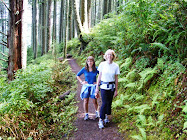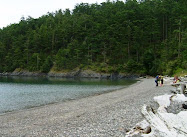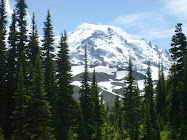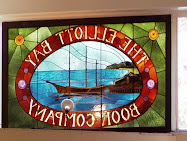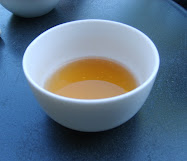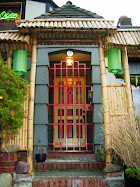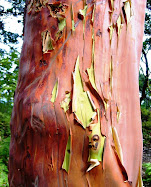 Normally Seattle area hikers go to the Issaquah Alps for winter hiking to avoid snow-covered trails in the higher Cascades. But this hasn’t been a normal year.
Normally Seattle area hikers go to the Issaquah Alps for winter hiking to avoid snow-covered trails in the higher Cascades. But this hasn’t been a normal year. A few weeks ago I joined Blue Heron Zen for a silent meditation hike on 2,024-foot-high Squak Mountain, just a few minutes southwest of downtown Issaquah in the Cascade foothills. For being so close to a major metropolitan area, Squak’s miles of lovely forest trails are relatively uncrowded. Today we see only two other hikers. On a weekend last summer, we saw only four others.
Squak Mountain became a state park in 1972 when the Bullitt family donated almost 600 acres at the top of the mountain with the provision that the land remain in a natural state. Years ago the mountain was logged and used for coal mining. Since then, the forest has regenerated to a lush temperate rainforest. Today you can still see remnant stumps of the huge old cedar and Douglas fir trees that used to mantle the mountain.
“You’re going to hit pretty deep snow soon and lots of downed trees,” says a woman hiking down the mountain as we head up. “Expect lots of potty-mouth moments as you sink into the snow and crawl over and under trees across the trail.” Since this is a silent hike, they’ll be potty-mouth thoughts instead.

After about 40 minutes hiking upward, the trail is covered in slick, packed snow. After an hour, branches of the Douglas fir and hemlock trees along the trail are weighted down with a thick crust of snow. I have to step carefully into the sunken footsteps of those ahead of me to avoid sinking up to my knees. I’m wishing I’d strapped on snow shoes and gaiters.
But it’s beautiful out here in the quiet winter forest glazed in white. And light despite the steel gray clouds overhead. A blanket of snow always brightens up the landscape, no matter what time of day.
About halfway into our planned loop, the footsteps on the trail stop. No one has ventured farther in this deep snow. Our hike leader Anita decides to call a meeting and break the silence.
 “We’re a little less than halfway, but I wanted to see how everyone is doing and whether we want to continue.” Some of us are noncommittal, but Jeff speaks up and we’re all glad he did. “I’m sinking deeper than everyone else with each step. There are potential dangers.” We decide breaking trail in the waning afternoon light wouldn’t be wise and head back down.
“We’re a little less than halfway, but I wanted to see how everyone is doing and whether we want to continue.” Some of us are noncommittal, but Jeff speaks up and we’re all glad he did. “I’m sinking deeper than everyone else with each step. There are potential dangers.” We decide breaking trail in the waning afternoon light wouldn’t be wise and head back down. Since I was on Squak, a heavy rainstorm melted most of the snow I encountered. Be careful out there anyway!
When You Go
There are several trailheads to Squak Mountain:
Leave from the Issaquah Trail Center at 110 S.E. Bush St. in Issaquah. To get there, head east on Interstate 90 to Exit 17 in Issaquah. Go south on Front Street for .8 mile and turn left on Bush Street. The Trail Center is a block and a half ahead on the left. Parking is available on the street.
To pick up the Squak Mountain Access Trail, walk west on Bush Street to Front Street and after crossing the street, head left for a block to Newport Way. Go right and just ahead to Wildwood Boulevard. The gravel road (just ahead on the left) that follows the creek is the Squak Mountain Access Trail. It heads south for about 2 miles, eventually hooking up with the East Ridge Trail.
West Access Trailhead: Go east on I-90 to Exit 15, just west of Issaquah. Head south on Highway 900 for 2.5 miles to a small gravel parking lot on your left.
Squak Mountain State Park: Go east on I-90 to Exit 15, just west of Issaquah. Head south on Highway 900 for 4 miles to Southeast May Valley Road and turn left. The park entrance is 2.6 miles ahead on the left. There is a $5 day-use fee for parking. Green Trails Map, Cougar Mountain Squak Mountain 203S














